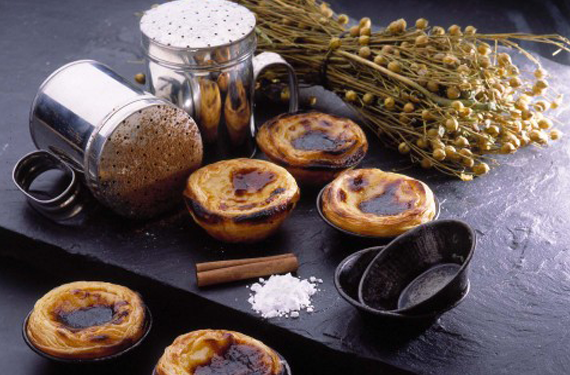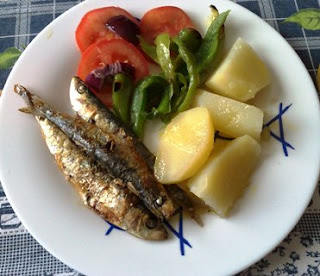Following the 7
Wonders of Portugal and the 7 Wonders with Portuguese origin in the world has
been announced; we can now reveal which typical Portuguese dishes were recently
considered as the 7 Wonders of the Portuguese cuisine.
10 years after its
declaration as intangible heritage of Portugal, the Portuguese Cuisine receives
a new tribute selecting the main traditional plates made and refined over
several generations. These are recipes that reflect genuine and traditional
Portuguese values and define our culture and identity as nation.
From a list of 21
traditional dishes chosen by a respected panel of experts, included on 6
different categories – starters, soups, seafood, fish, meat and sweets – and voted by the Portuguese people, the winners were:
Starters
Alheira de Mirandela
(Mirandela Sausage) - from Trás os Montes e Alto Douro
 The Alheira de
Mirandela is a traditional Portuguese cuisine sausage mainly produced in the
northern regions of the country, but the sausage of Mirandela is the known and
appreciated by the majority of the Portuguese.
The Alheira de
Mirandela is a traditional Portuguese cuisine sausage mainly produced in the
northern regions of the country, but the sausage of Mirandela is the known and
appreciated by the majority of the Portuguese.
It is a traditional
smoked sausage made with bread, several kinds of meat (pork, poultry), olive
oil, lard, garlic and sweet and/or spicy paprika. It is usually fried in olive
oil and served with cooked vegetables as the main course. It can also be stewed
after wrapped in cabbage to provide a more refined taste.
The Alheira de
Mirandela is now increasingly used as an ingredient in all kind of plates
cooked by the most respectful chefs, and can even be enjoyed in a variety of
gourmet dishes.
Queijo Serra da Estrela
DOP (Serra da Estrela Cheese PDO) – from Beira Interior/Beira Litoral
As a product with
Protected Designation of Origin (POD), mostly known as “Queijo da Serra”
(Mountain Cheese), the “Queijo Serra da
Estrela” is a ripened cheese with semi-soft, creamy white or yellow moisture.
It is produced mostly from November to March with sheep’s milk, curdled by the
flower of the thistle, a plant from the region.
With a distinctive
aroma and taste, smooth and refined, the “Queijo Serra da Estrela” delights all
cheese lovers.
Soups
Caldo Verde Soup –
between Douro and Minho
The Caldo Verde Soup
is undoubtedly the most renown and appreciated soup in Portugal. Originally
from Minho, you can taste it anywhere in the country. Made with kale cut into
thin strips, potatoes and a slice of sausage, this soup has a simple recipe and
can be cooked by anyone.
For a typical
savouring, the Caldo Verde Soup must be served in clay bowls with a slice of
corn bread, or, mostly in Lisbon, with hot sausage bread. It is particularly
popular in winter because it is hot to warm the souls who taste it.






 1/12/2012
1/12/2012
 Patrícia Gomes
Patrícia Gomes












